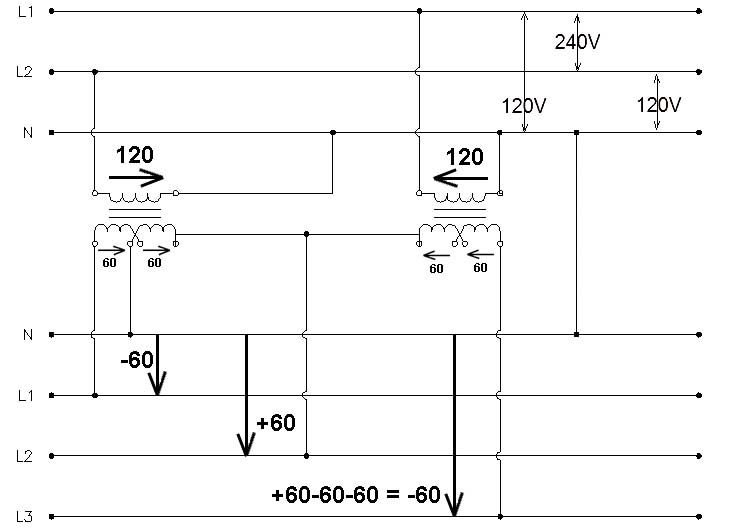mivey
Senior Member
I don't agree.I disagree. Not only are they possible but I think that they are exactly what you would get.
To help illustrate, assign primary L1-N the value +120 and L2-N the value -120. We can just use N as the reference and say L1=+120 and L2=-120.
Similarly for the secondary side, let N be the reference and we have L1=-60, L2=+60, L3=-60.
The left terminal of the left transformer is at 60 volts below the middle terminal, the right terminal is at 60 volts above the middle terminal.
The left terminal of the right transformer is at 60 volts above the middle terminal, the right terminal is at 60 volts below the middle terminal.
Going from N to L1 we drop 60 volts so L1=-60
Going from N to L2 we rise 60 volts so L2=+60
Going from N to L3 we have a 60 volt rise, a 60 volt drop and a 60 volt drop so L3=-60
L1-L2 = -60 - +60 = -120
L1-L3 = -60 - -60 = 0
L2-L3 = +60 - -60 = +120
To get 240 volts somewhere, you would have to change the connections between the two transformers as they are connected in opposition. If you connected them right-terminal to right-terminal you could get 240 volts


